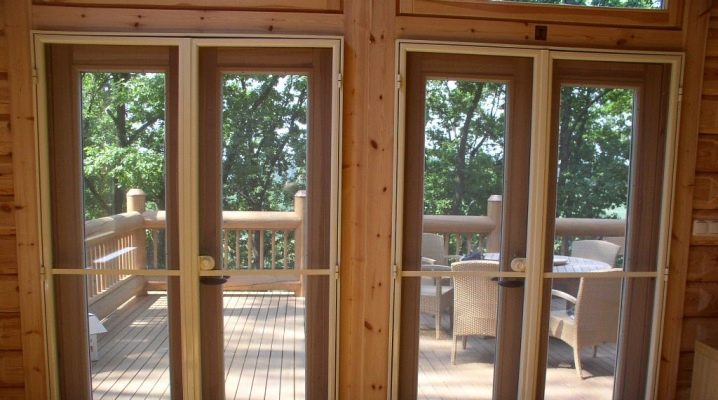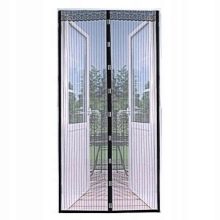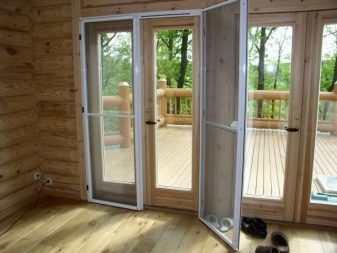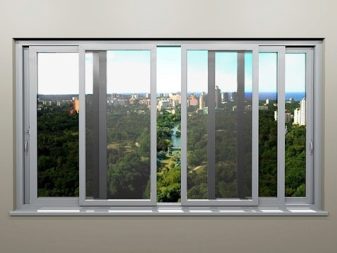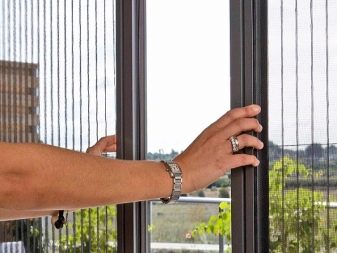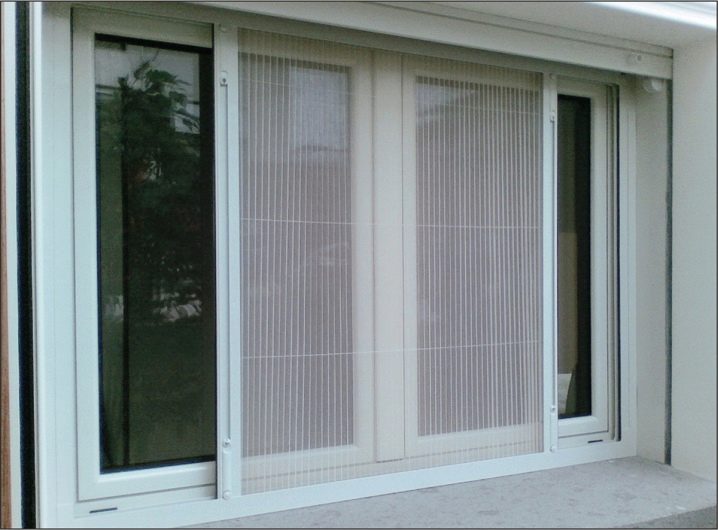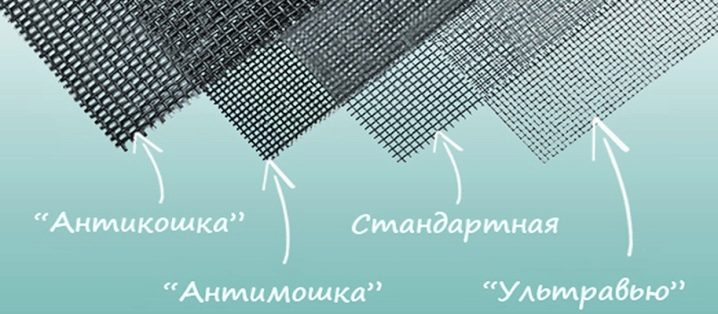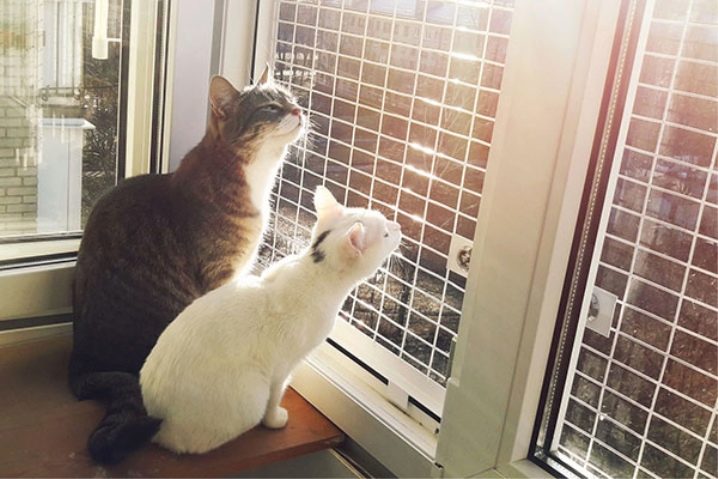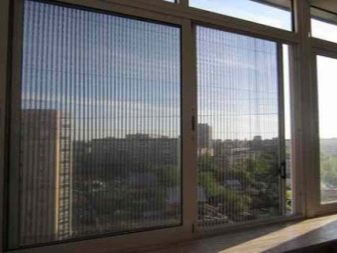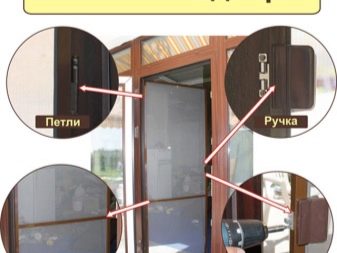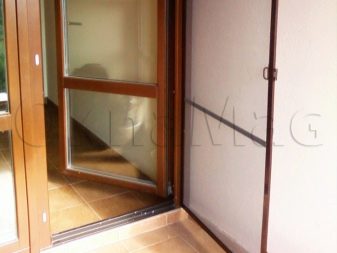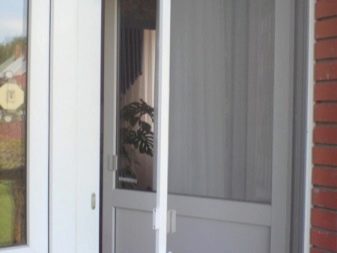Selection and installation of a mosquito net on the balcony
A mosquito net on the balcony is a necessary element of protection to avoid intrusive insects from entering living quarters. It is mounted on doors and windows, and sliding models for mosquitoes and poplar fluff for a loggia are popular among residents of multi-storey buildings. A detailed story about how to insert the mesh on an aluminum and plastic frame, what to look for when choosing it, will be of interest to all those who are just planning to acquire this useful device.
Design features
Mosquito net - a protective structure installed on the balcony in the openings of windows, doors, is part of panoramic glazing, if it provides for the possibility of ventilation. It is made of polyester, polyamide, fiberglass with a polymer or metal coating. A frame structure is located along the perimeter of the mesh fabric, which supports the insert in a taut position. The mesh sizes in the mosquito barrier range from 0.6 to 1.5 mm2.
Frames for mosquito nets are made of lightweight aluminum or plastic. With an opening height of more than 1 m, additional horizontal jumpers are used in the structure. The frame of the frame may contain handles or other elements that make it easy to remove and install it in the opening.
There are also frameless models with Velcro, magnetic clamps.
Types of meshes
The main classification of mosquito nets is based on their division by types of fabric and design features of the product. Modern protective devices are most often made combined, with a metal base and fiberglass inserts - they are noticeably stronger and more durable than traditional versions made of polymer fibers.
According to the type of construction, it is customary to subdivide them into 6 types.
- Framework. They consist of an aluminum frame and a mesh panel. The design is maximally simplified, easy to install on different types of windows. The aluminum frame is resistant to deformation, temperature extremes, and atmospheric precipitation. The disadvantages of this option include a not very strong mount, as well as a height restriction - no more than 220 cm.
- Magnetic. The simplest and most affordable version of mosquito nets has a frameless design. Fastening with magnets in the form of tapes or strips is fixed on the canvas itself, counter strips are attached in the opening of a window or balcony door. This is a convenient, safe option for living spaces where the balcony is combined with the rest of the apartment.
- Swing. In such mosquito nets there is an opening sash that allows you to use the balcony door without interference, on which such structures are installed. Fixation is carried out on the hinges, in addition there are magnetic latches on the frame. The sash is equipped with a self-locking mechanism that prevents accidental opening. Installing such a mesh requires free space next to the balcony door.
- Rolled. They are also called roller shutters, there are window models with vertical opening and door models that move horizontally. By their design, such mosquito nets are similar to roller shutters or curtains; the system does not need to be dismantled for the winter. The compact box completely hides the protective fabric; you can deploy the protective structure by simply pulling on a special cord.
- Sliding. Such mosquito nets for balconies and loggias consist of 2 parts: external, supplemented by rail guides, and also internal, where the rollers are installed. The mesh in the frame can be moved horizontally in the desired plane. This design option is quite durable, easy to use, and is securely held in the mount. But the opening system itself can jam or break, and it is more difficult to keep it clean than frame counterparts.
- Plisse. This type of mosquito nets is displaced horizontally, but has draped corrugated elements. When folded, this part slides over the edge of the side post. The design looks aesthetically pleasing, easy to use, but quite expensive.
The type of canvas is also of great importance. In addition to the classic options with rather large cells, special models of protective structures are produced for allergy sufferers and rooms where pets have access. The design is constantly being refined, new models are being created that can meet the requirements of the most discerning homeowners.
Here is the current classification of mesh fabrics.
- Classic. These nets have a mesh size of 1.2 mm2, allowing you to retain fluff or insects flying from the street. The resilient web will easily contain large debris in direct contact with it. The rather large size of the cells does not impede the penetration of sunlight into the room. Such meshes are available at an affordable cost and are available from most manufacturers.
- Antiallergenic. The second name for such nets is “anti-pollen”. Their feature is the halved cell size. The nets successfully trap small dust particles and allergens, and are well resistant to small midges and larger insects. Installation of such a protective structure significantly reduces the risks of exacerbation of allergic reactions during periods of flowering plants.
- Made of fiberglass (fiberglass). This is the most durable mesh construction option. Fibers are easily dyed in different colors. Fiberglass balconies are the most durable and reliable.
- Ultraview. Special mesh canvases of this type are made of the finest threads, almost invisible on the window. They do not block the view from the window and retain a good overview. This is the optimal solution for balconies with seedlings, since the ultraviolet nets do not provide strong shading.
- Reflective. The nets of this design have an unobtrusive coating of aluminum foil on the outside. They not only protect the balcony space from overheating, but also provide a mirror effect. With such a grid, you don't have to worry about the privacy of your private life. The reflectivity of the material is also high, it reduces heat penetration by up to 10% while maintaining normal air permeability.
- "Anticoshka". Specialized (especially durable) mosquito nets made of fabric with a high structure density and impregnation. The surface of the material is painted to avoid excessive attention of pets to what is happening on the street. The anti-cat net installed on balcony frames or doors is capable of supporting the weight of an average cat. It protects the pet from falling, it is necessary to ensure its safety.
Even the simplest mosquito net significantly increases the comfort of staying on the balcony, allows you to ventilate without unnecessary hassle, without risking getting hordes of insects in the house.
Which one to choose?
When planning to choose an anti-mosquito net for a loggia, a balcony door or plastic windows in the glazing, you have to take into account many factors. For example, the installation method and its compliance with the frame design. A detailed study of all the important points will help to find the right protective screen against mosquitoes or other sources of discomfort.
- Base type. On standard plastic windows or an aluminum loggia frame, the mesh can be found ready-made. Any non-standard designs require preliminary measurements. Typical solutions will not work here.
- Manufacturing material. Steel meshes are used only in "anti-cat" structures - they cannot be torn. Fine mesh nylon options trap even small particles of pollen or dust. Fiberglass is a fiberglass used where high mesh strength is required. In cheaper versions, it is replaced with conventional polyamide.
- Degree of protection. The simplest nets are able to protect only from mosquitoes and other insects. Specialized options can prevent allergens, small midges, large particles of sand and dust from entering the home. In the presence of pets, it is necessary to install only the "anti-cat" net.
- The presence of special requirements. For example, if you need to get the most aesthetic design of the balcony and loggia, you can choose the ultraviolet mesh, which allows you to enjoy the landscape. Reflective models will save you from the heat and prying eyes, while not depriving the room of sunlight.
- Budget. The most affordable options are frameless, the cost of the most expensive models does not exceed 1000 rubles. In the middle price category, there are grids for hinged and sliding window and balcony openings. The most expensive are roll designs and pleated options, and installation is paid separately.
- Installation method. The simplest models are considered to be frameless nets with Velcro or magnets. For plastic and aluminum frames, ready-made mosquito blocks are produced that are easily installed in the opening. For sliding structures, professional installation of nets is required, as is the case with pleated models. Roll-up options are easily fixed over any openings, they are most easily adapted to balcony door and window blocks.
These are the main recommendations, following which you can choose the appropriate version of the anti-mosquito protective cloth.
Installation
When equipping a balcony with mosquito nets, the easiest way to install yourself will be a Velcro model, without a rigid frame. The frame version is always fixed rigidly, on self-tapping screws or other clamps, so the installation is usually trusted by specialists so as not to damage the plastic frames.
When deciding to make and insert a Velcro mesh with your own hands, you must follow simple instructions.
- Measure balcony windows, doorways.
- Purchase consumables. A polymer mosquito net (with an allowance of 10 cm for each side), a contact-type Velcro tape, transparent quick-drying glue are suitable.
- Prepare the base. The openings are washed, degreased plastic parts.
- Choose an installation location. On sliding windows, the mesh is placed on the front of the frame. In the case of swing doors, it is necessary to take into account the way they are opened. It is important that the protective structure does not interfere with the normal use of all the functions of the frame.
- Cut out the mesh. It is cut taking into account the allowance, shortened during the installation process, if necessary. With the help of several loops or stitches, it is necessary to fasten some of the velcro with a pile along the edges of the mesh fabric.
- Stick the counterpart of the tape to the frame. It is better to choose the glue taking into account the compatibility with aluminum or PVC structures. It is necessary to wait until the fixation is quite secure. After that, you can try on the grid on the window, install it.
On sale there are also ready-made magnetic elements or protective anti-mosquito structures with Velcro. Their installation scheme is similar to that used when working with homemade nets. Magnets are most commonly used for mounting on aluminum or wood base.
With swing mechanism
Installation of a mesh on a swing-type balcony door is quite simple. Hinges are mounted along the perimeter of the opening, on which a structure with an anti-mosquito cloth is hung.It is important to arrange them so that the mesh opens in the direction opposite to the movement of the door leaf. For fixation in a stationary position in the opening and on the frame of the protective structure, a magnetic lock is mounted.
Installation of roll structure
In this case, the installation of insect protection is similar to that used for the installation of roller blinds. A box is attached above the opening, in which the wound mesh fabric is located. The holder block is hung on self-tapping screws or glue, special sticky point-type elements can be used. Since the roll-to-roll version of the design is made individually, it always exactly matches the size of the opening. You can mount a rolled mosquito net on either side of a door or window on a balcony or loggia.
For the selection and installation of a mosquito net on the balcony, see below.
